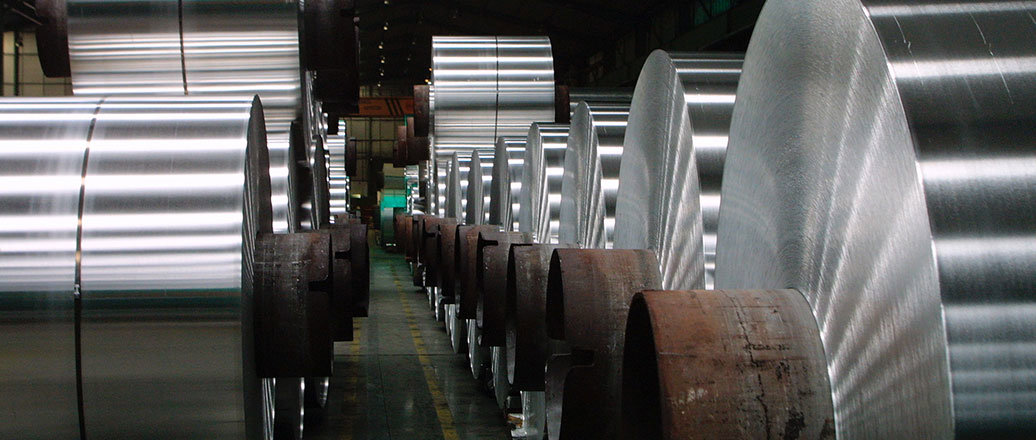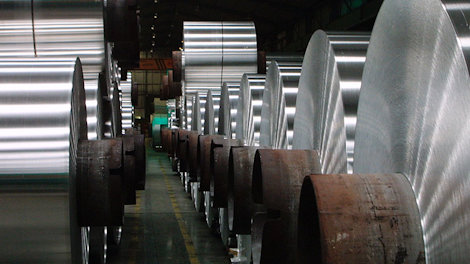The idea of bringing the well-run German aluminium company into an enlarged Hydro was not a new one. VAW had for some time been regarded as a company that complemented Hydro’s aluminium activities perfectly. VAW had strengths Hydro lacked, for example a strong position in rolling mills and cast products for the automotive industry.
The ambition of being numbered among the really large aluminium companies in the world had been expressed by several of Hydro’s CEOs. The company had to grow larger if it were to survive in an increasingly global aluminium market. This would be easiest to achieve through an acquisition. The alternative of building new large scale plants in Iceland or outside of Europe would be more costly.
As the really large aluminium companies Alcoa, Alcan and Pechiney extended their portfolios either through purchasing smaller players or joining in giant mergers, the choice of candidates for acquisition dwindled.
The winds of change
Extensive changes in the German energy market were predicted as companies such as E.ON announced that they would sell their non-core activities. This gave rise to the hope that they would sell their aluminium operation VAW. But to whom and at what price? This was no ordinary purchase. Interested parties would have to delve deep into their pockets to gain such an attractive company.
President and CEO Eivind Reiten casts his mind back on the first discussions with VAW in a hotel room near the Oslo airport in 1999: “We had no clear image of how we would carry out a merger, but we left the room with the distinct feeling that we would be able to form a company that was far stronger than the sum of its parts.”
There were many rounds of negotiations, and several other interested parties were considered as purchasers, before the agreement was signed. On 7 November 2001, the employees received the first news that concrete negotiations were underway between E.ON and Norsk Hydro.
VAW employee representative Claudia Bertuleit admits that November 7 was not an easy day for her: “This was a warning that VAW’s days as an independent company were numbered. It was tough for the VAW employees to see a company with an 85-year long tradition disappear.”
However it was no use grieving for what had been; it was time to look ahead and support the integration as best possible.
The VAW employees were anxious about what Hydro would do with the company. But it soon became clear that, apart from the unit Flexible Packaging, the operation would continue as before. The two companies complemented each other in a way that is rarely seen.
Points in common
On the day that Hydro transferred the payment to E.ON and became the legal owner of the shares in VAW aluminium AG, a general meeting was held in the new company. The go-ahead signal was given for starting the processes that would change VAW aluminium AG into part of Hydro Aluminium’s global structure. A new aluminium giant had been formed.
All mergers are based on the concept of integrating two operations to form a new company that is more powerful than the sum of its parts. This was as clear as daylight in the case of VAW and Hydro Aluminium. There were close bonds between the companies both industrially and historically.
Hydro’s history dates back to the beginning of the previous century and the company is based on Norwegian energy resources; VAW dates back to 1917, when Vereinigte Aluminium-Werke Aktiengesellschaft was established.
On paper it may appear that Hydro did not start aluminium production until 1960 when the first Hydro-owned plants in Karmøy came into production. But our aluminium history goes back further than this. When the aluminium division merged with Årdal og Sunndal Verk (ÅSV) in 1986, it could trace its history back to the second half of the forties, when aluminium production started in Årdal, and the fifties when the aluminium plants in Sunndal were built.
The merger with ÅSV also gave Hydro access to the aluminium operation Nordisk Aluminium, including Holmestrand which dates back to 1917, and Høyanger with roots back in 1919.
Strong ties
VAW had purchased sheet ingot from Årdal and Høyanger for decades. The links between the Norwegian and German aluminium industry remained strong, both in terms of exchange of expertise and business relations. For example, a number of Norwegian metallurgists were trained at German colleges and universities.
One example of the strong ties between the two is the decision of ÅSV’s board in 1985 to look into joining forces with VAW with a view to gaining access to the EU market and creating a strong aluminium constellation.
However this was met with political scepticism in Norway, which was actively supported by the union representatives, who wanted a “Norwegian solution”. When the issue was raised in the Storting in the spring of 1986, it was agreed that a merger should be arranged between the partly state-owned Norsk Hydro and the wholly state-owned ÅSV.
Sixteen years after the Hydro/ÅSV merger, VAW was again an interesting partner for the Norwegian aluminium industry. Although market conditions have changed and both VAW and Hydro Aluminium have since developed into international players, the reason for joining forces basically remains the same – to create a powerful international aluminium company based in Europe and with clear ambitions for profitable global growth.
Updated: August 18, 2020






